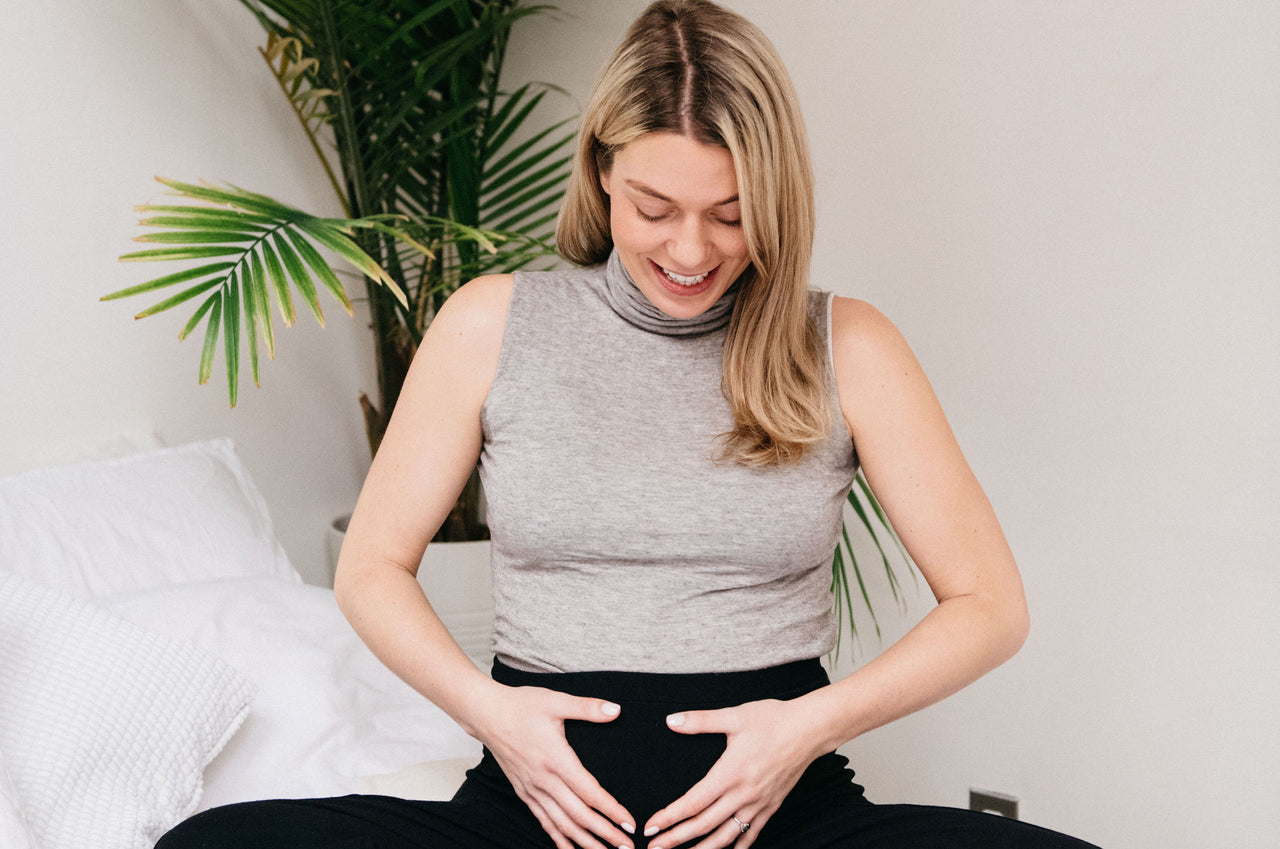
Everything You Need to Know About Stretch Mark Creams
Though not exclusive to pregnant bodies, stretch marks are definitely more on-the-radar once you’re expecting.
And, while stretch marks don’t pose a health risk to you or your baby, they can be uncomfortable. Plus, the cosmetic change to your skin may make you feel less self-assured.
To help you figure out how to choose the right stretch mark treatment, we’ve created this primer to help you compare products and find your fave.
Redeem your Free Pregnancy Sample Box here!
What even are stretch marks?
Stretch marks are lines that appear on the skin when it has expanded. While pregnancy may be the first time some people get stretch marks, they may appear any time someone experiences weight fluctuations.
While your body manages day-to-day changes in your skin, sudden and considerable expanding (or contracting) is harder for it to adapt to. The marks on the skin are the scars that come as a result of skin tearing as your body expands.
While some believe increased levels of hormones in pregnancy may make it easier for the skin to tear, the research is still foggy. Experts aren’t totally sure if this is why stretch marks are more common during pregnancy.
Although stretch marks sometimes appear sooner, you'll often start to notice them at the end of the second and beginning of the third trimesters.
How Can I Reduce the Appearance of Stretch Marks?
One word: hydration.
Hydration during your pregnancy is essential for so many reasons, including maintaining your skin’s elasticity.
Drinking about 68 ounces of water per day is recommended during pregnancy.
Hydrating your skin from the outside with moisturizing products designed to maximize your skin’s elasticity can also help.
The sooner you start applying your preferred product, the more likely you are to reduce the likelihood of stretch marks.
Many experts suggest applying moisturizers “twice daily from the first trimester throughout pregnancy.”
Ok, So What Should I Look for in a Stretch Mark Cream?
Just like everything else in pregnancy, you have lots of choices when it comes to stretch mark cream. And, as always, what works for one person may not work for another. It’s all about finding the best fit for you.
In general, moisturizers (including ones for stretch marks) can be split into four categories:
As you go down the list, the moisturizers get thicker and more deeply hydrating. That’s because the thicker creams have less water and more hydrating ingredients.
Lotions
Lightweight lotions may be useful early in your pregnancy. However, they may not provide enough hydration as you get further along.
Creams
Because they include more hydrating ingredients, creams tend to be most popular for stretch mark formulas.
Ointments
Let’s be real, the word “ointment” doesn’t sound super luxurious. But, you know what does? Butter.
You may see “butter” on products that are thicker (and qualify as ointments on the moisture scale).
Gel/jelly/oil
Finally, the pure moisturizer category. These products don’t have water added, making them the thickest of the bunch. While they are ultra-hydrating, they can be gooey, sticky, or oily (think, Vaseline, pure shea butter, or bitter almond oil).
Got it. What Ingredients Should My Stretch Mark Cream Have?
A lot of this comes down to personal choice. And (of course) double-check with your care team to ensure whichever product you choose is safe for you during your pregnancy.
Understanding the different categories of ingredients can help you know which product might be a good fit.
Humectants
These ingredients, “attract water from the dermis into the epidermis, increasing the water content in the epidermis,” according to VeryWell Health.
Think glycerin or hyaluronic acid.
Occlusives
This category refers to additives that increase the water content of your skin. These ingredients slow down the evaporation of water from your skin.
Mineral oil and cocoa butter are in this category (among others).
Emollients
This group of ingredients gives skin that smooth, supple appearance. Plant oils, mineral oil, shea butter, cocoa butter, petrolatum, and fatty acids are all emollients.
As you can see, some ingredients (like cocoa butter and shea butter) do more than one job.
In general, products with cocoa butter, vitamin E, collagen, and elastin are quite popular as stretch mark creams.
Alright, How Do I Choose?
It’s all about personal preference when you’re choosing a stretch mark cream.
For example, some people may prefer all-natural products, while others will only consider vegan options.
The best product is the one you’ll actually use twice per day throughout your pregnancy.
